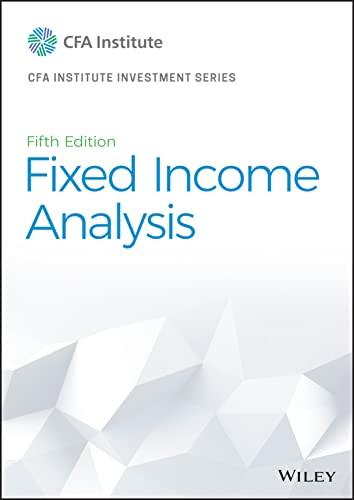An analyst is evaluating two US apparel companies: Atelier and Trapp. Atelier is a large company that
Question:
An analyst is evaluating two US apparel companies: Atelier and Trapp. Atelier is a large company that focuses on high-end apparel brands. It is profitable despite a high cost structure. Trapp is smaller and less profitable than Atelier. Trapp focuses on less expensive brands and strives to keep costs low. Both companies purchase their merchandise from suppliers all over the world. The analyst recognizes that apparel companies must maintain adequate oversight over their suppliers to control the risks of reputational damage and inventory disruptions. Supplier issues are particularly relevant for Atelier and Trapp following a recent fire that occurred at the factory of Global Textiles, a major supplier to both companies. The fire resulted in multiple casualties and unfavorable news headlines. The analyst notices a significant difference in the way Atelier and Trapp approach ESG considerations. After the fire at its supplier, Atelier signed an “Accord on Fire and Building Safety,” which is a legally binding agreement between global apparel manufacturers, retailers, and trade unions in the country where the fire occurred. After signing the accord, Atelier made a concerted effort to fix and enhance machinery in factories of its suppliers. Its objective was to improve workplace safety—notably, to reduce lost employee time due to factory incidents and the rate of factory accidents and fatalities.
Investors view Atelier’s corporate governance system favorably because management interests and stakeholder interests are strongly aligned. Atelier’s board of directors includes a high percentage of independent directors and is notably diverse. In contrast, Trapp’s founder is the majority owner of the company and serves as CEO and chairman of the board of directors. Furthermore, Trapp’s board is composed mainly of individuals who have minimal industry expertise. As a consequence, Trapp’s board was unprepared to adequately respond to the Global Textiles fire. Given the lack of independence and expertise of Trapp’s board, investors consider Trapp’s corporate governance system to be poor. Because of its emphasis on low costs and reflecting its less experienced board, Trapp chose not to sign the accord.
Implications for CDS
Single-name CDS on both Atelier and Trapp are actively traded in the market, although Trapp’s CDS is less liquid. Before the Global Textiles fire, five-year CDS for Trapp traded at a spread of 250 bps, compared to a spread of 150 bps for the five-year CDS for Atelier. The difference in spreads reflects Trapp’s lower trading liquidity, perceived lower creditworthiness (primarily reflecting its smaller size and lower profitability), and hence higher default risk relative to Atelier.
After the Global Textiles fire, spreads on the CDS for all companies in the apparel sector widened considerably. Credit spreads for the five-year CDS on Atelier widened by 60 bps (to 210 bps), and credit spreads for the five-year CDS on Trapp widened by 75 bps (to 325 bps). The analyst believes that over the longer term, the implications of the fire at Global Textiles will be even more adverse for Trapp relative to Atelier. The analyst’s view largely reflects Trapp’s higher ESG-related risks, especially the perceived weaker safety in its factories and its weaker corporate governance system. In particular, the analyst believes that spreads of Trapp’s CDS will remain wider than their pre-fire level of 250 bps, but Atelier’s CDS spreads will return to their pre-fire level of 150 bps.
Describe how the analyst can use CDS to exploit the potential opportunity.
Step by Step Answer:






